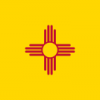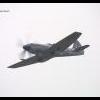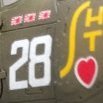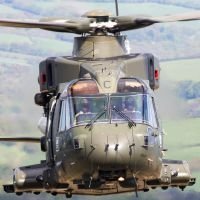Search the Community
Showing results for tags 'corsair'.
-
Right kiddos, before I start trying to talk myself out of it because I never finish anything and I've got other things going (and others starting soon) and blah blah blah, -5 is my (first?) choice. It'll be in Reserve markings, I believe, because I saw a photo of one that looked good, and then I found the decal sheet to do it. I've also got True Details cockpit, if I can find it- it may be buried in another kit's box, deep within a larger stash box. So maybe OOB after all!? source: http://replicainscale.blogspot.com/2010_07_01_archive.html (bigger version at source: image 8 of 19, or scroll down until you see it) bob
-
Here's my entry: ... and here's what's in the box: ... and markings: ... though I might use these as I have a hankering for the red-bordered star-and-bars: I got a couple of extras too, a masking set because I am lazy... ... and a set of wheels so I don't have to clean up the join around the tyre treads: I've got my paints: Dull Dark Green, Zinc Chromate Yellow, Non-Specular White, Intermediate Blue and USN Sea Blue from the USAAC/USN range... ... and I've got the weekend pretty much free, so I hope to make a start shortly. Cheers, Stew
- 60 replies
-
- 10
-

-
Hi guys, I finished this one for the corsair GB and thought I would share it here. Any comments welcome. Painted with vallejo. Build thread is here, http://www.britmodeller.com/forums/index.php?/topic/234997190-tamiya-148-f4u-1a-nz5248/. First time using resin which was abit of a challenge but enjoyable. Anyway picture time; Thanks for looking Joss
-
Hi folk,s,as mentioned in chat I have had this kit for about six years and the box has long gone and I 'm ashamed to say all the sprues and parts were thrown in a larger box with a few other kit's but everything has been found so I,m in with it! I had the pleasure of seeing one of these beast's in flight up at East Fortune a few years back and what a beautiful noise that big Radial made!See you soon with a start.
-
I've had a few Corsairs in the stash patiently waiting for this STGB, and now, I think, they're happy to be off the shelf. For the first one, I'm planning on using the popular Fundekals sheet to build Leslie Durno's JT383. The well researched instructions say that this one was painted in the American TSS equivalents, so that is what I'll attempt to do. I've been planning this one a while and even had a dream last night about adding the RN CO vents. I wish I had dreamed about clipping the wings too, then maybe I'd already know how to do it. For the second Corsair, I'm thinking about trying to do NZ5361, using a hodgepodge of decals from the stash. I believe both aircraft are Vought built F4U-1A's according to a little research, and so I'll be using the Tamiya kit of that subject. If all goes well, I may start a USMC birdcage Corsair that will be the subject of my entry into the Vignette GB - we're allowed to have some elements built already for that one, and I think I may need the head start. I'm going to try and replicate this picture of Capt Donald Balch and his Corsair. I've built the Tamiya kit once before, just last month in fact. Here's 'Tiny' the F4U-2 night fighter.
-
Hi folks,built for the STGB here on BM,My take on Tamiya's Birdcage Corsair VMF-213 I believe at Guadalcanal in 1942,these aircraft weathered heavily but I contented myself with a wash and a bit of gun staining,Many thanks for taking the time to look. background here.http://www.britmodeller.com/forums/index.php?/topic/234997145-tamiya-birdcage-corsair/.
-
I'm up for this with a triple build of the excellent Tamiya kit in 1/72. I'll be doing a Birdcage Corsair as a Fleet Air Arm Mk.I, an F4U-1A boxing as a Brewster built Mk.III and an F4U-1D boxing as a post-war RNZAF aircraft. Decals will come from Xtradecal, Fündekals and Freightdog, wheels from Barracudacast and a sprinkling of etch from Eduard. Mark.
-
Here is my Birdcage Corsair from the early 80's. Ugly boxart, the kit looks OK with fine raised panel lines and with an aftermarket decal sheet with a trillion alternatives from Sky models. Haven't decided yet whether it's gonna be US Marines or FAA.
-

1/72 VF(N)-101 F4U-2 Corsair - 'Tiny'
Cookenbacher posted a topic in Ready for Inspection - Aircraft
It can sometimes be dangerous to flip through reference books, you never know what could catch your eye. In this case, I came across a picture of a Corsair night fighter on P.9 of one of Dana Bell's books on the subject, and couldn't help but rush out and order a 1/72 Tamiya kit and Quickboost radome. Some weeks later, here is my attempt at recreating that pic in 1/72. During the build, our own Rob85 suggested that 'Tiny' would be a nice ironic nickname for it, as it was being built beside some Spitfires, and the Corsair looks like an uncouth beast sitting next to an elegant elliptically winged Spitfire. There is absolutely no historical evidence that any F4U-2's were named 'Tiny', but I could find no evidence that one was not named 'Tiny' either. VF(N)-101 were among the first units to fly the Corsair from USN carriers in combat, participating in the Truk raids of early 1944.- 15 replies
-
- 20
-

-
Chance Vought F4U-1 Corsair Hobbyboss 1:48 In February 1938 the U.S. Navy Bureau of Aeronautics published two requests for proposal for twin-engined and single-engined fighters. For the single-engined fighter the Navy requested the maximum obtainable speed, and a stalling speed not higher than 70 mph (110 km/h). A range of 1,000 miles (1,600 km) was specified. The fighter had to carry four guns, or three with increased ammunition. Provision had to be made for anti-aircraft bombs to be carried in the wing. These small bombs would, according to thinking in the 1930s, be dropped on enemy aircraft formations. In June 1938, the U.S. Navy signed a contract with Vought for a prototype bearing the factory designation V-166B, the XF4U-1, BuNo 1443. The Corsair design team was headed up by Rex Beisel. After mock-up inspection in February 1939, construction of the XF4U-1 powered by an XR-2800-4 prototype of the Pratt & Whitney Double Wasp twin-row, 18-cylinder radial engine, rated at 1,805 hp (1,346 kW) went ahead quickly, as the very first airframe ever designed from the start to have a Double Wasp engine fitted for flight. When the prototype was completed it had the biggest and most powerful engine, largest propeller and probably the largest wing on any naval fighter to date. The first flight of the XF4U-1 was made on 29 May 1940, with Lyman A. Bullard, Jr. at the controls. The maiden flight proceeded normally until a hurried landing was made when the elevator trim tabs failed because of flutter. Production F4U-1s featured several major modifications compared with the XF4U-1. A change of armament to six wing-mounted .50 in (12.7 mm) M2 Browning machine guns (three in each outer wing panel) and their ammunition (400 rounds for the inner pair, 375 rounds for the outer) meant that the location of the wing fuel tanks had to be changed. In order to keep the fuel tank close to the center of gravity, the only available position was in the forward fuselage, ahead of the cockpit. Accordingly, as a 237 gal (897 l) self-sealing fuel tank replaced the fuselage mounted armament, the cockpit had to be moved back by 32 in (810 mm) and the fuselage lengthened. In addition, 150 lb of armour plate was installed, along with a 1.5 in (38 mm) bullet-proof windscreen which was set internally, behind the curved Plexiglas windscreen. The canopy could be jettisoned in an emergency, and half-elliptical planform transparent panels, much like those of certain models of the Curtiss P-40, were inset into the sides of the fuselage's turtledeck structure behind the pilot's headrest, providing the pilot with a limited rear view over his shoulders. A rectangular Plexiglas panel was inset into the lower center section to allow the pilot to see directly beneath the aircraft and assist with deck landings. The engine used was the more powerful R-2800-8 (B series) Double Wasp which produced 2,000 hp (1,491 kW). On the wings the flaps were changed to a NACA slotted type and the ailerons were increased in span to increase the roll rate, with a consequent reduction in flap span. IFF transponder equipment was fitted in the rear fuselage. These changes increased the Corsair's weight by several hundred pounds. The performance of the Corsair was impressive. The F4U-1 was considerably faster than the Grumman F6F Hellcat and only 13 mph (21 km/h) slower than the Republic P-47 Thunderbolt; all three were powered by the R-2800. But while the P-47 achieved its highest speed at 30,020 feet (9,150 m) with the help of an intercooled turbocharger, the F4U-1 reached its maximum speed at 19,900 ft (6,100 m), and used a mechanically supercharged engine. The Model Continuing their release schedule with the different variants of F4U Corsairs, Hobbyboss have now released the F4U-1. The top opening box has a nice artistic impression of the aircraft in flight whilst inside there are seven sprues of medium grey styrene, two separately moulded parts, one sprue of clear styrene and a decal sheet. All the parts are very nicely moulded with fine panel lines and rivet detail throughout. There’s no sign of flash or other imperfections and only a few moulding pips, but what there are, are on some of the finer parts, so care will need to be taken when removing them and cleaning up. Fortunately the wing problems that have plagued the previous release are actually correct for this version. As with most of their aircraft kits, should go together fairly easily. It’s not a complicated build, but there are areas that have quite a bit of detail, particularly the engine, where the parts are quite fragile and fiddly. Naturally as with most aircraft builds, construction begins with the cockpit, and the fitting of the two side consoles and two piece seat assembly to the rear bulkhead. The rudder pedals are glued to the front bulkhead, to which the instrument panel bulkhead is attached, followed by the instrument panel for which a decal is provided, even though the IP has dimples where the instruments are mounted, a good panel to use those Airscale instruments and bezels you’ve promised to use one day. The joystick complete with control wires glued through the instrument panel bulkhead and into the front bulkhead. As per the real aircraft, there isn’t a cockpit floor, so side consoles, now attached to the rear bulkhead are then glued to the instrument panel bulkhead forming the cockpit “tub”. The engine is a model on its own, with the two cylinder banks moulded as single items which are then joined together and fitted with the single piece inlet manifold complete with the myriad of pipes. The exhausts are next and care should be taken to get the right parts in the right place as it’s crucial to get them exhausting out of the right places. The two piece crank case is fitted with the two magnetos and with the propshaft pushed through it from behind, glued to the front of the engine along with the pushrod ring. The accessory gear box is made up form three parts and glued to the rear of the engine. The wings are designed such that the modeller has a choice of whether to pose them folded or spread. The choice is pretty much made with the assembly of the wing centre section which includes the lower fuselage and gull wing sections. The two radiator baths are glued to the single piece bottom wing section along with the folding point ribs, before the two upper wing sections are attached. The leading radiator intakes are then fitted with their grilles before being glued onto the wing. The fold points are detailed with three piece fold mechanisms and two piece spars. When posing the wings extended you won’t need to add the mechanisms and you use the straight spar part instead to the bent part. Unfortunately the flaps, although separate have been moulded in such a way that they cannot be posed drooped, although I’m sure with a bit of modelling it can be done should you wish. On the centreline there is a large cooling vent fitted, with the accelerator sling hooks fitted on either side, and the clear panel to the rear. The seven piece tailwheel/hook assembly is now built up and along with the tail hook has the option of being built extended or lowered, do ensure that the correct parts are used for the option you wish to build. The tailwheel, cockpit, and engine assemblies are now fitted to one half of the fuselage, along with the cockpit sidewalls and tailwheel bay structure, which is made up from five parts. The fuselage is then closed up and the centre wing assembly glued into position, as is the engine cowl flap section and cowling. Just behind the cockpit, on either side, two panels are attached, whilst in the cockpit the two part gun sight is fitted. The horizontal tailplanes are each single piece parts, to which the elevators and control rods are fitted. Unlike the previous releases, this kit comes with open machine gun bays, but with the three 50 cals with separate ejector guides and with their associated belt trays, with separate belts included. All the gun bay doors are also separate, and look like they could be a bit awkward to fit in the closed position even though there are nice ledges for them to sit. The outer wings can now be fitted to the inner wings and in whatever position you have chosen. The main undercarriage assemblies are now built up. Each assembly consists of the main oleo, scissor link, retraction actuator legs front mounted door and two piece wheels. The completed undercarriage assemblies are then fitted into their respective bays along with the main and tailwheel bay doors. The single piece three bladed propeller, propeller hub, windscreen, canopy, two aerial masts and spine mounted anti-collision light are attached. Decals There two aircraft options provided on the decal sheet which are well printed, in register and with good opacity. Along with the national markings and individual codes, there are a small selection of stencils for one aircraft, as well as the yellow tips for the propeller blades, for those modellers who don’t like to paint this area. The two aircraft options are 17-F-6 and 17-F-25, both in a two tone Blue Grey over Light Gull Grey scheme, at least that’s what’s on the colour callouts. Conclusion Well, what can I say here that I haven’t already said in the review? It’s a great looking model, which will probably be a nice quick and fairly pain free build. It’s nice to see Hobbyboss adding the armament to this version; perhaps they do read reviews and comments? Highly recommended. Review sample courtesy of
-
Morning all, Sneaking over the line just before new year are my final two completions, the Airfix Wildcat and Tamiya Corsair. Both in 1/72 and completely out of the box. Two very neat little kits. Thanks for looking, comments welcomed Happy new year Shaun
- 17 replies
-
- 41
-

-
Done in Tamiya and Vallejo acrylics as usual- brush painted. I attempted to get a faded look from the humid south east asia air by blending together thinned paint in slightly different stages. Am pretty happy about the way it turned out aside from the gap on the underside, which I completely forgot about, and the fact that for the life of me I can't get rid of the gloss finish- will try spraying the rattle can humbrol matt varnish, as matt cote and XF-86 don't seem to be able to do it. Now on to the Vietnam GB!
-
Evening all, Having run out of steam a little with my Battle of Britain project, I've switched my attention to my main area of interest, naval aviation. I started a Hobby Boss F9F last week, but couldn't resist making a start on another couple of classic fighters whilst the Panther trickles along in the background. Having been o impressed with the Defiant, I wanted to crack open another of Airfix's recent toolings, and having picked up the Wildcat and Kate dogfight double, the F-4F seemed an obvious choice. My pair of Tamiya Corsairs have been screaming at me from the stash for some time now too, so I thought, given the similar schemes worn by the Wildcat and the Birdcage variant of the Corsair, I might as well crack open the latter at the same time. Both seem lovely kits, the Tamiya especially, though I guess that's to be expected. So, first progress, and after a bit of construction the cockpit interiors have been sprayed. Whilst not altogether interesting in itself, the answers to my questions in my other thread, and the IPMS Stockholm website proved to be fairly enlightening regarding the colours. The IPMS Stockholm page contains information regarding these colours specific to the types, revealing that my usual go-to colour of interior green was not accurate for either of these aircraft. For the Wildcat, and indeed most Grumman types it seems, a darker, Bronze green was used, whilst the Corsair had a dark dull green interior, as confirmed in my question thread. The latter is a little less clear cut it seems, but images posted by LanceB in my question thread of a recovered wreck seem to match with this green rather well. For the Wildcat, the Stockholm colour charts recommend Hu 75 plus a touch of other greens, which I was happy to ignore, as the neat 75 looked reasonable to my eye, whilst Hu 149 was suggested for the Corsair. This seemed a little bright straight out of the (very old!) pot so I darkened it a little with some of the Hu 75 and some black. Neither are 100% perfect, but not too bad I reckon, and lets face it, it'll be pretty difficult to see inside either cockpit once everything is closed up. Next step will obviously be to detail paint and weather the interiors, and I shall also set about getting the remainder of the interior colours laid down, notably that wonderfully garish pink in the corsair tail Thanks for looking, comments welcomed Cheers Shaun
-
Hi guys, Finally something that I can call done - the 1/72 Revell F4U-5 Corsair. It's my second 1/72 build. I tried some weathering techniques but I am not really happy with the results. Anyway up to the next - the 1/72 Italeri Ju-52. Feedback is welcome. Cheers, Michael:
-
...
-
Hi guys! Let me show you one o my older plane. It was a really quick building out of the box, with some scratchbuilding just for fun! Hope you like it, thanks for watching! Matyi from Hungary
- 13 replies
-
- 22
-

-
Here’s my rendition of the Arii (originally produced by Otaki?) 1:48 scale F4U-1A Corsair. Even though it was first issued in 1972, the Arii kit builds into a nice Corsair. The good points are very accurate outline and shapes, finely recessed panel lines, and great parts fit. Drawbacks are a simple and inacurate cockpit and wheels, and an engine that doesen’t remotely resemble any engine used in any aircraft. Here’s how I upgraded the kit: I replaced the cartoonish engine with with a resin R-2800, updated the cockpit with Eduard photoetched insturment panel, seat and sidewall details, and used seatbelts and wheels from True Details. I replaced ther kit tail wheel with a more accurate-looking one from the spares box, and attached it at an angle for a more candid appearance. I also cut away the flaps and dropped them, added exhaust stacks made from drilled-out styrene rod, and added a small whip antenna to the fuselage spine. I couldn’t determine if this plane had the tail hook removed or not, so I left it on. VF-17’s Corsairs didn’t have the usual antenna mast, and some had unusual field-modified antennas. Based on photos, I built an antenna that runs fron the top if the vertical fin down to the tip of the right horizontal stabilizer. From there, it runs into the usual antenna lead-in on the right side of the fuselage, behind the cockpit. I don’t know for certain if it’s accurate, but that’s how I interpreted the antenna arrangment in photos. I used a Pasche VL airbrush to apply the three-toned camouflage scheme, though most photos of the actual aircraft indicate it was very weathered, with almost no distiction between the non-specular sea blue upper surfaces and the intermidiate blue sides. For markings, I used an old SuperScale sheet to portray “White 29”, the plane flown by Lt. Ira Kepford of VF-17 while based at Ondonga, New Georgia, in the Solomon Islands in late 1943. I made a mistake in not placing the kill markings at the correct angle to the tape covering the seams of the forward fuselage cell. VF-17 was the first navy squadron to be equipped with the Corsair. Assigned briefly to USS Bunker Hill, the squadron was soon transferred to the Solomon Islands to serve as a land-based squadron. In its two tours of duty in the Solomons, VF-17 was credited 156 aerial victories and produced 12 aces, the most of any squadron in the Navy. Kepford was the U.S. Navy’s 6th highest ranking ace with 16 victories and 8 probables.
-
Chance Vought F4U-5N Corsair, Early version Hobbyboss 1:48 A 1945 design modification of the F4U-4, first flown on 21 December 1945, was intended to increase the F4U-4 Corsair's overall performance and incorporate many Corsair pilots' suggestions. It featured a more powerful Pratt and Whitney R-2800-32(E) engine with a two-stage supercharger, rated at a maximum of 2,850 hp (2,130 kW). Other improvements included automatic blower controls, cowl flaps, intercooler doors and oil cooler for the engine, spring tabs for the elevators and rudder, a completely modernized cockpit, a completely retractable tail wheel, and heated cannon bays and pitot head. The cowling was lowered two degrees to help with forward visibility, but perhaps most striking as the first variant to feature all-metal wings, a total of 223 were produced. The F4U-5N was a radar equipped variant with the radar housed in a pod mounted under the port wing, between the cannon bay and the wing tip. A total of 214 were produced and proved very successful in combating the low and slow night intruders used by the Communist forces in Korea, which the US jet powered night fighters found troublesome to intercept. Originally pitted against night flying Yak 9’s early in the war, they couldn’t cope against the Mig jet fighters. The Model Continuing their release schedule with the different variants of F4U Corsairs, Hobbyboss have now released the F4U-5N. The top opening box has a nice artistic impression of the aircraft in flight whilst inside there are nine sprues of medium grey styrene, two separately moulded parts, one sprue of clear styrene and a decal sheet. All the parts are very nicely moulded with fine panel lines and rivet detail throughout. There’s no sign of flash or other imperfections and only a few moulding pips, but what there are, are on some of the finer parts, so care will need to be taken when removing them and cleaning up. The one thing that jumps out on you is the wings. The 5N had all metal wings but, unfortunately Hobbyboss have included the original fabric covered outer wing panels used on their earlier marks. This is a great shame and shows the sort of laziness that has plagued the Hobbyboss brand, certainly with their aircraft kits. Fortunately the styrene looks thick enough for the modeller to sand the “ribs” down to make a nice flat surface. Of course some research will be required to add any panels that were fitted. Apart from the wing style problem this kit, as with most of their aircraft kits, should go together fairly easily. It’s not a complicated build, but there are areas that quite a bit of detail, particularly the engine, where the parts are quite fragile and fiddly. Naturally as with most aircraft builds, construction begins with the cockpit, and the fitting of the two side consoles and two piece seat to the floor. The rudder pedals are glued to the back of the instrument panel, for which a decal is provided, even though the IP has dimples where the instruments are mounted, a good panel to use those Airscale instruments and bezels you’ve promised to use one day. The panel is then fitted to the top of the console ends, whilst the front bulkhead, with separate compass attached is glued to the front of the floor and the rear bulkhead with separate headrest attached is glued to the rear. The joystick and control wires are glued to an under floor section, which is glued into position with the joystick passing through the hole in the cockpit floor. The engine is a model on its own, with the two cylinder banks moulded as single items which are then joined together and fitted with the single piece inlet manifold complete with the myriad of pipes. The exhausts are next and care should be taken to get the right parts in the right place as it’s crucial to get them exhausting out of the right places. The two piece crank case is fitted with the two magnetos and with the propshaft pushed through it from behind, glued to the front of the engine along with the pushrod ring. The accessory gear box is made up form three parts and glued to the rear of the engine. The wings are designed such that the modeller has a choice of whether to pose them folded or spread. The choice is pretty much made with the assembly of the wing centre section which includes the lower fuselage and gull wing sections. The two radiator baths are glued to the single piece bottom wing section along with the folding point ribs, before the two upper wing sections are attached. The leading radiator intakes are then fitted with their grilles before being glued onto the wing. The fold points are detailed with three piece fold mechanisms and two piece spars. When posing the wings extended you won’t need to add the mechanisms and you use the straight spar part instead to the bent part. Unfortunately the flaps, although separate have been moulded in such a way that they cannot be posed drooped, although I’m sure with a bit of modelling it can be done should you wish. The seven piece tailwheel/hook assembly is now built up and along with the tail hook has the option of being built extended or lowered, do ensure that the correct parts are used for the option you wish to build. The tailwheel, cockpit, and engine assemblies are now fitted to one half of the fuselage, along with the cockpit sidewalls and tailwheel bay structure, which is made up from five parts. The fuselage is then closed up and the centre wing assembly glued into position, as is the engine cowl flap section and cowling. Just behind the cockpit, on either side, two panels are attached, whilst in the cockpit the two part gun sight is fitted. The horizontal tailplanes are each single piece parts, to which the elevators and control rods are fitted. The elevators and rudder appear to have the same problem as the outer wing panels, in that they are shown to have a fabric covering. As with the wings, the 5N also had metal control surfaces with the possible exception of the elevator trim tabs, which from historical photographs look like they still had a fabric covering. Bearing that in mind, and the extra work involved in correcting the problem, it’s probably best to do so before fitting to the fuselage. Once the outer wings have been rectified you will need to open up the flashed over holes for the cartridge ejectors and rocket stubs, although I’m not sure if these were always fitted to the 5N, just the standard 5’s. Another oddity is the fact that Hobbyboss have provided all the cannon bay access doors as separate items, and yet haven’t provided detailed cannon bays. So you might want to glue all the doors into position before adding the lower halve of the wing to ensure getting a flush fit. With the wing halves joined together the fold joint rib is fitted, along with the cannon muzzles and separate ailerons and outer flaps. The outer wings can now be fitted to the inner wings and in whatever position you have chosen. The windscreen, canopy and fin/rudder are also fitted at this point in the instructions. The main undercarriage assemblies are now built up. Each assembly consists of the main oleo, scissor link, retraction actuator legs front mounted door and two piece wheels. The completed undercarriage assemblies are then fitted into their respective bays along with the main and tailwheel bay doors. The two piece radar pod, single piece four bladed propeller, propeller hub, three aerial masts and two exhaust deflector strips are attached. Finally the two, two piece drop tanks are assembled, fitted with what looks like a vent tube, and glued into position via their pylons. The rocket stubs, if fitted are also attached, finishing the build. Decals There is just a single aircraft option provided on the decal sheet , that of F4U-5N of VC-2, Korea 1953. Although well printed, in register and with good opacity, there’s something not quite right with them. I’ve searched the interweb for corroborating pictures and there seems to be some confusion out there as well. Some photos show the aircraft with white codes whilst others show the aircraft as having green codes, and Stars and Bars, even the box art seems to show everything in white. I can see why they would have been green since they were painted on a night fighter so maybe Hobbyboss have them right. They certainly look slightly odd, particularly due not being used to seeing them that colour. Conclusion Well, what can I say here that I haven’t already said in the review? It’s a great looking model, which will probably be a nice quick and fairly pain free build, but only if you ignore the fabric effect on the outer wings, rudder and elevators. If you can’t ignore that stuff, then it’s time for the sanding sticks, maybe some filler and a scribing tool, to get to something that resembles like the real thing. It’s entirely up to you. Recommended. Review sample courtesy of
-
Seatbelt and Mask sets for Tamiya F4U-1A Corsair 1:32 HGW Models As with the set for the Revell 1:32 Fw-190, reviewed HERE, this set has been released in HGW’s Basic Line. The quality is the same as the previously reviewed set, as are the components, i.e. a sheet of laser cut seatbelts, etched buckles and clasps for the seatbelts and a sheet of masks. Being laser cut, the edges of both the seatbelts and masks are as crisp and clean as you could want. Only the small join to the sheet marring the perfection. If you’re using a new No11 blade then you should be able to cut them out without the need for any further cleaning up. The buckles and clasps are quite small, even in this scale, but the seatbelts are stiff enough to pass through them with relative ease. The completed assemblies should be given a bit of a dark wash to tone them down a bit, and then just attached to their appropriate positions. They will probably need a bit of a bend to get them to sit correctly and realistically. Job done. As with the masks in the Fw-190 set, these too have suffered a little bit of shrinkage, which hopefully has been taken into account. The set includes masks for both the interior and exterior of the windshield and canopy, which is a great help, particularly for the interior. Just fit and, using your favourite paints and airbrush, spray away. Conclusion This is another very useful set by HGW, and can be used by any level of modeller. The masks are generally used for when painting with an airbrush, but I’m sure they could be useful for those who don’t. The seatbelts are little more fiddly, but with a bit of care and patience, anyone can have a good looking addition to the kits seat. Very highly recommended. Review samples courtesy of
-
The next HobbyBoss 1/48th Corsair variant is a F4U-5N (early) - ref. 80390 Release expected in late April 2015 Source: http://www.hobbyboss.com/index.php?g=home&m=product&a=show&id=89&l=en V.P.
- 6 replies
-
- Hobby Boss
- F4U-5N
-
(and 1 more)
Tagged with:
-
Hi all, My entry for this Group Build is going to be the Revell boxing of the excellent Hasegawa F4U-7 Corsair in 1/48 scale. These aircraft were used extensively by the Aeronavale during this bitter conflict and were operated from both shore bases and carrier decks, their good range and ability to carry a large amount of just about anything you could possibly want to drop on or fire at people making them very popular (with the French at least, probably less so the Algerians). Here are the usual "kit in bits" shots. Striking box art of the usual Suez marked aircraft. The contents and decals sheet laid out. A closer shot of the excellent Revell decal sheet. And now a couple of shots of the real thing to give some idea of the finish I am going to try and achieve, and to prove that they were also shore based, and very, very dirty! I hope that this choice of topic meets with the approval of the other group builders (there are some great topics on the go already). Any help and advice (and criticism) is always welcome. Thanks for looking. Craig.
- 41 replies
-
- 7
-

-

Eduard Brassin F4U-1A Corsair Cockpit Set. 1:32
Shar2 posted a topic in Aftermarket (updates/conversions)
F4U-1A Corsair Cockpit Set Brassin 1:32 Cockpit Set (632053) Having released numerous additional sets for the previously released F4U-1 Corsair, Eduard have now turned their attention on the newer F4U-1A version, starting with the cockpit. The set comes in a very well packed cardboard with the parts in several zip lock bags and prevented from being shaken around by two foam pads. There are fifty two resin parts in a mixture of medium and dark greys, plus one clear resin parts, a sheet of pre-painted etched brass and a sheet of unpainted photo etched parts,. The detail on the resin parts is quite amazing, being super sharp, with good depth, although some parts have small sections of flash which need to be removed on top of the removal from the casting blocks. The cockpit is literally a tub made up of the front and rear bulkheads, what would be the fuselage side walls and the lower fuselage interior, which has the lower windows in the need of flash removal. The kits interior rib detail needs to be completely removed to allow the fitment of the tub, which shouldn’t take too long with a nice sharp curved blade and some sanding sponges. The moulded detail on the bulkheads and inner fuselage parts needs to be seen to be believed, add to this all the smaller sundry parts and you will have a truly amazing cockpit. Yet the modeller will still need to add their own small wire parts for which the dimensions and shape are provided in the instructions. Painting of the parts, especially those pre-moulded will be a bit of a chore, but with care you will end up with something of a masterpiece which would be good on its own, let alone fitted to the model. The resin is further enhanced with the addition of the two sheets of etched parts, the pre-painted seat belts which are quite complex, but with care and attention will build into a pretty amazing representation of the real things, whilst the unpainted sheets contains a selection of brackets, levers and an alternative instrument panel for which an acetate sheet of instruments is provided. Conclusion The Tamiya F4U-1A Corsair is already an amazing kit with very few apparent problems or vices but the detail that this cockpit set delivers really will take it to the next level. Having said that, as with the previous kit, the cockpit in this model is already superb, and it makes one wonder if this additional set is really required. The level of detail and the superb moulding is really quite amazing, and with some careful painting and weathering it will look amazing. So, if you absolutely have to have every aftermarket release for your build then you will need this one. Highly recommended. Review sample courtesy of














